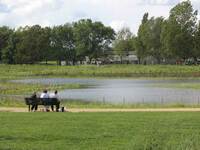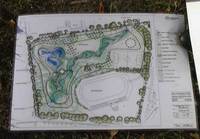- England
- Scotland
- France
- Holland
- Germany
- Italy
- Spain
- Portugal
- USA
- China
- Japan
- India
- Iran
- Advice
- Gardens
- England
- Scotland
- France
- Holland
- Germany
- Italy
- Spain
- Portugal
- USA
- China
- Japan
- India
- Iran
- Advice
- Garden Tours
Book: Landscape Planning and Environmental Impact Design: from EIA to EID
Chapter: Chapter 9 River engineering, channelization and floods
Storm water should be infiltrated, to recharge aquifers and prevent floods
Wherever possible, rainfall should be infiltrated into the ground where it falls. It should not be ducted into pipes, conduits, ditches or rivers. This ensures that the volume of peak discharge is not increased, and the interval between the start of a storm and the time of peak discharge is not reduced. Infiltration has a number of advantages (CIRIA, 1992b:15): - soil moisture levels are enhanced - the base flow in streams can be regenerated - water quality is improved and the discharge of pollutants into the drainage network is restricted Conducting water in vegetated swales assists with evaporation, transpiration and infiltration. Vegetation also keeps the soil structure open. But swales should not be designed as geometrical ditches. They should be integrated with the landform design. More water will be infiltrated when soils and rocks are porous, but infiltration is also advantageous in less permeable substrates. Research in Sweden has shown that the use of soakaways, porous drains, and infiltration basins, can prevent dieback in trees and the structural damage to buildings which occurs when shrinkable clays become too dry (Holmstrand 1984). In 1981 two American engineers reported on the results of a survey into methods of stormwater management (Peortner & Reindl 1981). They found that 'temporarily storing, or detaining, excess stormwater runoff and then releasing it at a regulated rate' had become 'a fundamental principle in stormwater management'. A total of 325 public authorities in the USA and Canada responded to a questionnaire and 219 authorities reported that storm detention facilities had been installed. Details of the 12,683 facilities were analyzed and it was found that 47.5% were dry basins, 24.7% were car parks, 18.8% were ponds, 5.5% were rooftop storage areas, and the remaining 3.3% were underground tanks, oversized sewers, tunnels and other special facilities. The authorities gave the following reasons, listed in decreasing order of importance, for installing storm detention areas: 1to reduce downstream flooding, 2to reduce the cost of the drainage system, 3to reduce onï¾site flooding, 4to reduce soil erosion, 5to capture silt, 6to improve onï¾site drainage, 7to reduce pollution, 8to improve aesthetic quality, 9to enhance recreational opportunities, 10to replenish groundwater supplies, 11to supplement domestic water supply, 12to catch water for irrigation. There are few technical innovations which can so completely transform a singleï¾purpose design into an opportunity for multiï¾objective design. Vegetated roofs, roof gardens, storage ponds, streams, and reinforced grass carparks bring multiple benefits.

